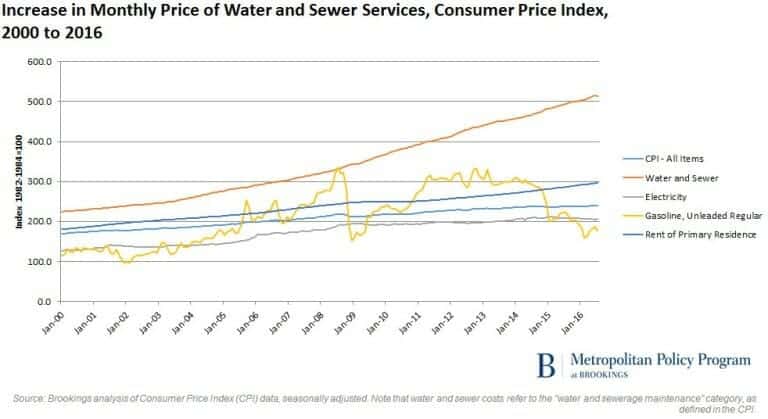Full article: 10 facts about water policy and infrastructure in the US
From the water safety crisis in Flint, Michigan to the near-disaster with the Oroville Dam in California, a string of water-related events have made headlines, and called into question the U.S. focus on keeping critical water systems safe and functioning. In advance of the U.S.-focused Water Week and the U.N. World Water Day, Brookings experts have explored many dimensions of water infrastructure. 10 facts derived from their research are highlighted below.
1. Water plays a critical role in the economy. As Metropolitan Policy Program experts Lynn E. Broaddus and Joseph Kane put it, “water means business.” 30 of the country’s largest water utilities support up to $52 billion in economic output and 289,000 jobs annually, and millions of households, businesses, and industries depend on water systems every day. Investing in water infrastructure ensures that these industries stay afloat, and more investment often means more jobs, say Broaddus and Kane.
2. The federal government only accounts for a small share of total public spending on water infrastructure. Despite the economic importance of water and calls for increased infrastructure investment from the Trump administration, the federal government actually plays a small role relative to states and localities, which […]

